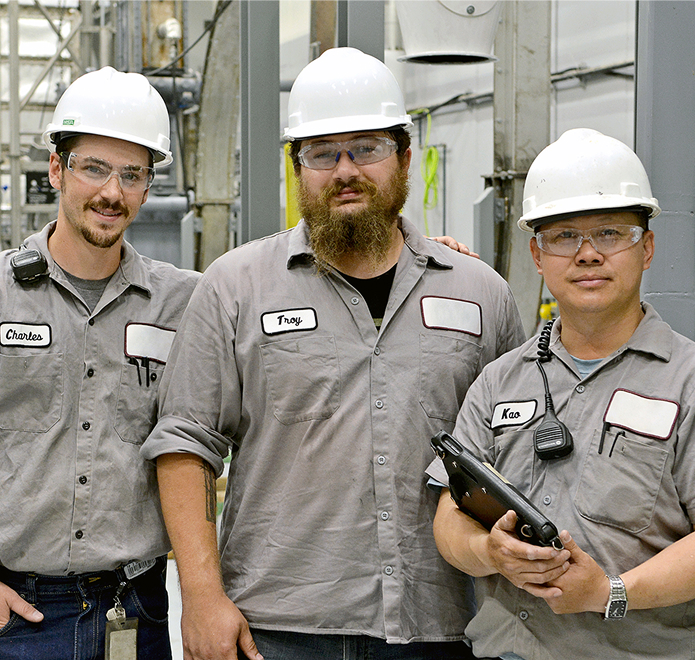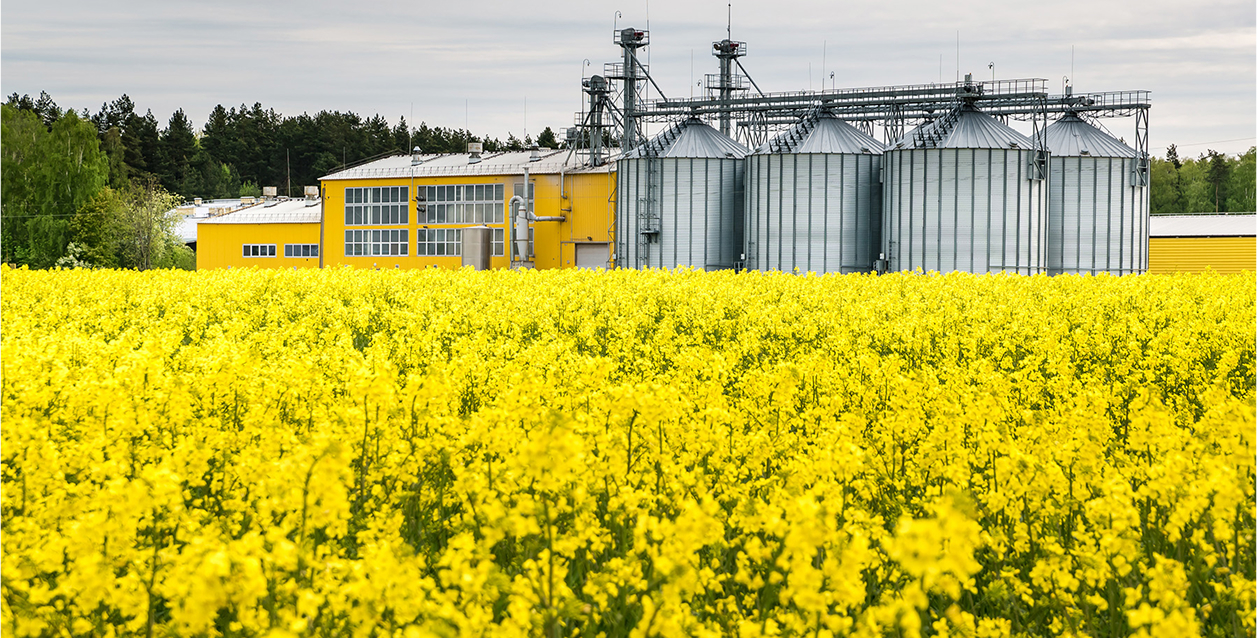Table of Contents
- Introduction: The Evolution of Canola Oil Processing
- CPM: The Global Authority in Canola Oil Processing
- Rapeseed Oil vs. Canola Oil: What’s the Difference?
- Questions We’ll Answer in This Guide
- Canola Oil Processing Step By Step
- Unlocking the Future of Canola Processing: Protein Extraction
- How CPM Supports Canola Oil Processing
- Take Your Next Steps in Canola Oil Processing with CPM
Introduction: The Evolution of Canola Oil Processing
Canola oil is one of the most widely used vegetable oils in the world, valued for its neutral flavor, heart-healthy profile, and versatility in food production, biofuels, and industrial applications. But, turning tiny, hard-hulled canola seeds into high-quality, commercially viable oil requires a precise, highly engineered process, one that CPM has spent decades perfecting.
As the global leader in oilseed processing technology, CPM and its Crown brand design and supply complete canola oil processing solutions, from seed preparation to oil refining and meal processing. Whether it’s pre-pressing and solvent extraction for high-yield efficiency or mechanical pressing for solvent-free oil production, CPM delivers engineered solutions that maximize oil recovery, energy efficiency, and operational reliability.
CPM: The Global Authority in Canola Oil Processing
With over 145 years of expertise, CPM’s Crown brand is the largest supplier of oilseed extraction technology in North America, and a trusted partner for processors worldwide. Leading producers, including ADM, Cargill, and Bunge, rely on CPM’s innovative equipment, process solutions, and global support to optimize their operations.
- Industry-Leading Technology: CPM’s proprietary solvent extraction systems recover 99% of available oil, reducing solvent loss and energy consumption.
- Turnkey Plant Engineering: From seed cleaning to refining, CPM designs fully integrated processing plants tailored to customer needs.
- Global Innovation Center: A 15,000 sq. ft. oilseed pilot plant and R&D facility where customers can test, validate, and scale canola processing innovations.
- Lifecycle Support: With Lifecycle360 Services, CPM provides process optimization, training, maintenance, and automation solutions to maximize plant efficiency.
“CPM doesn’t just sell equipment. We design entire processing plants, ensuring everything works together seamlessly.”
— Bruce MacKinnon, Global Technical Sales Manager – Preparation, CPM
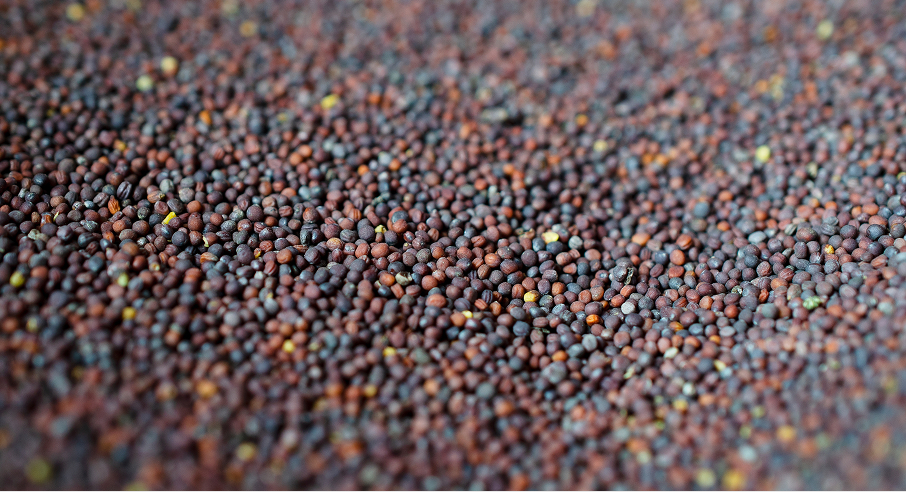
Rapeseed Oil vs. Canola Oil: What’s the Difference?
The Key Differences Between Rapeseed Oil and Canola Oil
You may have heard the terms “rapeseed” and “canola” used interchangeably, and wondered if they describe the same oilseed, or two different seeds. The answer is: “sort of.”
Rapeseed and canola come from the same plant species, Brassica napus, a member of the Brassicaceae family, the same group that includes mustard, cabbage, broccoli, and horseradish. While they share genetic origins, their oil composition and usage differ significantly.
Traditional rapeseed contains high levels of erucic acid, which can be harmful in large quantities, making it unsuitable for human consumption. In the 1970s, Canadian scientists developed a low-erucic acid variety, known as “double-zero” rapeseed, which was safe for humans and animals. This innovation transformed rapeseed oil from an industrial lubricant into a widely used cooking and biofuel ingredient. However, due to negative associations with the term “rapeseed,” especially in North America, Canadian marketers rebranded it as Canola, derived from “CANadian Oil, Low Acid.”
Why “Canola” Became the Preferred Term in North America
In North America, “rapeseed oil” fell out of favor both due to its unfortunate name and its historical association with high-erucic acid varieties. Today, “canola” refers exclusively to low-erucic, low-glucosinolate rapeseed varieties, which meet strict food safety and nutritional standards. While European “double-zero” rapeseed follows similar guidelines, canola has even stricter maximum erucic acid limits (2% in Canada vs. 5% in the EU). Despite these differences, the term “canola” is now widely used—even beyond Canada—to describe all edible, low-toxin rapeseed oil.
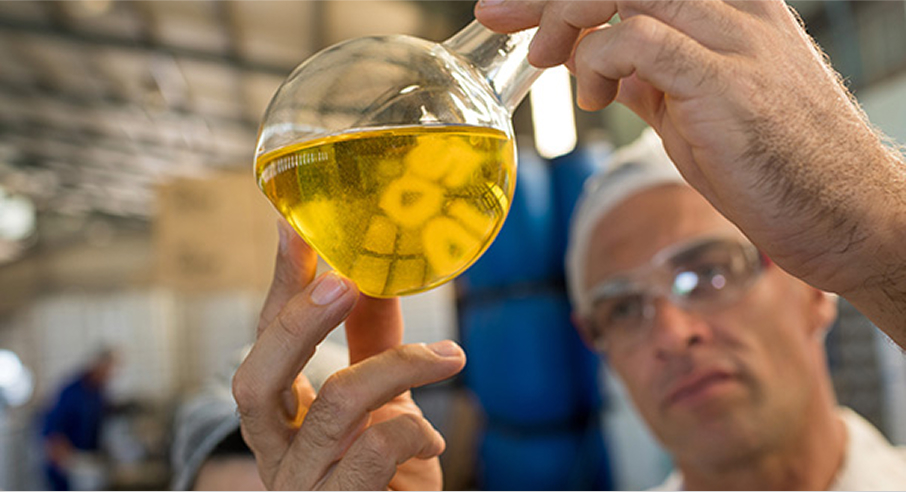
Questions We’ll Answer in This Guide
Canola oil processing is a complex but essential operation. In this guide, we’ll break it down step by step and answer some of the most commonly asked questions, including:
- How is canola oil made? (Step-by-step breakdown from seed to oil)
- What is the best way to process canola oil? (Mechanical pressing vs. solvent extraction)
- Why is seed preparation critical to oil yield? (The role of conditioning, flaking, and cooking)
- What equipment is used in canola oil processing? (CPM’s products, engineered solutions, and integrations)
- How does canola protein extraction work? (The next frontier in plant-based proteins)
- What are the most energy-efficient ways to extract canola oil? (How CPM’s technology reduces energy use and solvent loss)
- How does refining improve canola oil quality? (The degumming, bleaching, and deodorization process)
Canola Oil Processing Step By Step
Turning raw canola seeds into high-quality oil requires multiple stages of processing, each designed to maximize oil recovery, maintain product quality, and improve efficiency. Whether using the common technique of solvent extraction or mechanical pressing (which is solvent-free), the foundation of a high-yield, energy-efficient operation starts with proper seed handling and preparation.
At CPM, we specialize in engineering complete oilseed processing plants, integrating CPM-manufactured equipment with carefully selected third-party solutions to ensure seamless operation from start to finish. Our expert-designed processes help customers achieve:
- Higher oil yields through precise seed conditioning and extraction
- Lower energy costs with optimized equipment design
- Reduced waste & solvent loss for a more sustainable operation
Let’s break down the canola oil production process step by step.
Step 1: Seed Reception & Cleaning
From the moment canola seeds arrive at a processing facility, careful handling and processing is crucial to ensure smooth operation downstream. Foreign materials like dirt, metal fragments, and leftover plant matter can not only damage equipment but also reduce oil yield by contaminating the extraction process. That’s why thorough cleaning and pre-processing is the first and most essential step in the canola oil journey.
“Seed preparation is the foundation of efficient oil extraction. If the seed isn’t properly cleaned, it can damage equipment and reduce oil yield.”
— Bruce MacKinnon, Global Technical Sales Manager – Preparation, CPM
The cleaning process starts as soon as the raw canola seed enters the facility, where it is screened, separated, and conditioned to remove unwanted materials. Aspirators, like the CPM Aspirator, play a critical role by using controlled airflow to lift and remove fine dust and chaff, ensuring only clean, high-quality seed moves forward.
By the end of this stage, the canola seed is essentially free from contaminants and ready for the next step: preparation for oil extraction.
Seed Reception & Cleaning Steps
- Seed Arrival & Storage – Canola seeds are delivered and stored in large silos, and then moved into smaller shift or day bins until processing begins.
- Screening – Large debris, like stems, stones, and pods, are removed with a screener.
- Magnetic Separation – Metal contaminants are extracted using industrial magnets to protect processing equipment.
- Aspirator Cleaning – A high-speed air stream removes dust, husks, and lightweight impurities.
- Weighing & Flow Control – The cleaned seed is weighed and distributed for further processing.
Step 2: Seed Preparation – Conditioning, Flaking, & Cooking
Once the canola seed is cleaned and free of impurities, the next step is preparation—an important phase where the seed’s structure is optimized for maximum oil recovery. Compared to other oilseeds, canola seeds are particularly small and particularly tough. If the shell isn’t properly broken during the flaking process, solvent extraction can be ineffective because the solvent will just run around the seed rather than penetrating it to extract the oil.
Proper conditioning, flaking, and cooking are all opportunities to optimize the efficiency of canola oil extraction, leading to reduced residual oil losses and lower processing costs.
At this stage, the seed undergoes controlled heating, moisture adjustment, mechanical breakdown, and cooking to soften the oil cells and improve extraction efficiency. This prepares the seed for either mechanical pressing or solvent extraction, depending on the plant’s processing method.
“Conditioning is critical in canola processing. Heating the seed properly reduces energy costs in downstream processing and improves extraction efficiency.”
— Ian Hall, Global Technical Sales Manager – Oilseed, CPM
Seed Preparation Steps
- Conditioning: The seeds are gently heated all the way through using a Vertical Seed Conditioner to soften the outer shell and adjust moisture levels for optimal preparation performance.
- Flaking: The conditioned seeds pass through high-efficiency Flaking Mills, breaking them into thin, uniform flakes to increase surface area and expose the oil cells.
- Cooking: The flakes are heated further in a Cooker-Conditioner to further break down the seed structure and remove excess moisture, making oil extraction more efficient.
By the end of this stage, the canola seed is fully prepared for extraction, ensuring higher oil yield, lower energy consumption, and improved processing efficiency.
Step 3: Pre-Pressing – The First Stage of Oil Extraction
Once the canola seeds have been conditioned, flaked, and cooked, they are ready for the first stage of oil removal: pre-pressing. This process uses mechanical screw presses to extract a portion of the oil before the remaining material moves on to solvent extraction for maximum recovery.
Pre-pressing is a critical step in large-scale canola processing, as it helps:
- Remove 60-75% of the oil before solvent extraction
- Reduce the amount of solvent required in the next phase
- Improve overall plant efficiency and reduce energy costs
“Pre-pressing recovers about two-thirds to three-quarters of the oil before solvent extraction. The key to maximizing yield is optimizing the pressing and conditioning steps.”
— Bruce MacKinnon, Global Technical Sales Manager – Preparation, CPM
How Pre-Pressing Works
During this stage, the cooked flakes pass through a heavy-duty screw press, which applies high mechanical pressure to squeeze out most of the oil. The remaining seed material, known as press cake, still contains some oil, which will be extracted in the next step using solvents.
CPM’s high-efficiency screw presses, part of CPM’s Crown oilseed extraction solutions, are engineered to:
- Apply consistent pressure, ensuring uniform oil removal
- Minimize heat buildup, preventing oil degradation
- Handle high-capacity processing with reduced wear and maintenance
By the end of this stage, a significant portion of the oil has been extracted, and the press cake is ready for the final step: solvent extraction.
Pre-Pressing Steps:
- Cooked flakes enter the press – Conditioned and flaked canola seed is fed into a mechanical screw press.
- Oil is squeezed out – The press applies high mechanical force to remove 60-75% of the oil.
- Press cake is discharged – The partially de-oiled seed cake exits the press, ready for solvent extraction.
- Press cake is cooled in a piece of equipment like our Heavy-Duty Horizontal Dryer/Cooler
Step 4: Solvent Extraction – Maximizing Oil Recovery
Even after pre-pressing, the canola press cake still contains a significant amount of oil, often 20-30% by weight. To recover this remaining oil, processors can use solvent extraction, the most efficient and widely used method for large-scale canola oil production. By the end of this step, the oil content in the meal is reduced to 1% or less, maximizing yield and profitability.
At CPM, we specialize in high-efficiency oilseed extraction technology, helping processors optimize yield, reduce solvent use, and improve energy efficiency. Our canola oil extraction equipment includes industry-leading counter-current extractors, solvent recovery systems, and desolventization solutions designed for high-volume, continuous operation.
“Solvent extraction is where we get that final push, reducing oil content down to just 1% in the meal. It’s the most efficient way to maximize yield while keeping operating costs low.”
— Bryent Blankenship, Global Technical Sales Manager, Crush, CPM
How Solvent Extraction Works
Solvent extraction involves washing the press cake in a chemical solvent, typically hexane, which dissolves and pulls out the remaining oil. The hexane-oil mixture (called miscella) is then processed to separate the oil from the solvent, allowing the solvent to be recycled and reused.
This process is performed using high-efficiency canola oil extractors, like those engineered by CPM’s Crown brand, designed to:
- Maximize oil recovery while minimizing solvent use
- Operate continuously for high-capacity processing
- Reduce material consumption through solvent recovery systems
By the end of solvent extraction, the raw canola oil is ready for refining, and the remaining de-oiled meal can be processed into animal feed or specialty protein products.
Solvent Extraction Steps:
- Press cake enters the extractor – The partially de-oiled press cake is transported to the solvent extractor.
- Oil is dissolved in hexane – The cake is washed in hexane, which pulls out the remaining oil.
- Miscella processing – The hexane-oil mixture (miscella) is separated, and hexane is removed through evaporation.
- Solvent recovery and reuse – The hexane is condensed and recycled for continuous processing.
- De-oiled meal is discharged – Hexane is stripped from the de-oiled meal using heat and steam. The final meal product, now containing less than 1% oil, is ready for further processing.
With solvent extraction complete, the raw canola oil is ready for refining, and the de-oiled meal can be processed into high-protein feed or value-added products.
Step 4.5 (Optional): Full Mechanical Pressing – Solvent-Free Canola Oil Extraction
While most large-scale canola oil processing facilities use pre-pressing followed by solvent extraction, some producers opt for full mechanical pressing to extract oil without solvents. This method, often called expeller pressing, uses only mechanical force to remove oil from the seeds, eliminating the need for hexane or other extraction chemicals.
Full pressing is commonly used by organic and specialty oil producers who prioritize solvent-free processing. However, it comes with trade-offs: higher residual oil in the meal and increased mechanical wear on equipment.
“Full pressing is an option, but solvent extraction is far more efficient. That’s why most canola oil production facilities use pre-pressing followed by solvent extraction.”
— Ian Hall, Global Technical Sales Manager – Oilseed, CPM
Pros & Cons of Full Mechanical Pressing
Advantages
- No solvents required – Ideal for organic, non-GMO, or specialty oils.
- Simpler process – Fewer processing steps and no need for solvent recovery systems.
- Lower regulatory and environmental concerns – No hexane handling or emissions to manage.
Downsides
- Lower oil yield – Typically leaves 8-12% residual oil in the meal compared to 1% with solvent extraction.
- Higher mechanical stress – Screw presses experience significant wear and require regular maintenance.
- Higher energy costs – Requires more mechanical power to extract oil efficiently.
How Full Mechanical Pressing Works
Instead of sending the cooked flakes through pre-pressing and solvent extraction, this process relies solely on high-pressure screw presses to extract oil.
CPM’s heavy-duty screw presses, designed for continuous high-capacity oilseed processing, help maximize oil recovery while minimizing equipment wear.
Full Mechanical Pressing Steps
- Cooked flakes enter the press – Conditioned and flaked canola seeds are fed directly into a high-pressure screw press.
- Oil is extracted mechanically – The press applies intense pressure to squeeze out oil, leaving 8-12% residual oil in the meal.
- Press cake is discharged – The de-oiled meal is cooled in a horizontal or counterflow cooler and processed for animal feed or other uses.
While full mechanical pressing offers a solvent-free alternative, most commercial processors choose pre-pressing and solvent extraction for higher oil recovery and efficiency.
Step 5: Canola Meal Processing – Unlocking the Full Value of the Seed
While canola oil is the primary product of canola seed processing, the meal left after oil extraction is a highly valuable co-product. Canola meal is the second-most traded protein source in the world, playing a crucial role in global livestock, dairy, poultry, and aquaculture feed.
By optimizing drying, cooling, and handling, processors can ensure high-quality, high-protein meal that meets the demands of international feed markets. CPM specializes in meal processing solutions that maintain nutritional integrity, improve digestibility, and enhance handling efficiency.
“The goal isn’t just oil recovery—it’s full resource utilization. Canola meal is a high-protein ingredient with growing demand in feed and alternative protein markets.”
— Alexander Danelich, Global Vice President of Sales – Specialty, CPM
Canola Meal Advantages
- High-Value Livestock Feed – Used in dairy, poultry, swine, and aquaculture for its digestibility and amino acid balance.
- Boosts Dairy Productivity – Studies show cows fed canola meal produce 1L more milk per day per cow.
- Sustainable Protein Source – Can be more cost-effective than soybean meal, with higher fiber and better amino acid balance.
- Essential for Aquaculture – Canola meal supports efficient protein utilization in fish feed.
How Canola Meal is Processed
Once oil extraction is complete, the remaining meal is dried and cooled if needed, and handled properly to ensure its value in feed applications.
Canola Meal Processing Steps
- Drying & Cooling – The meal is dried and cooled to preserve protein quality and prevent spoilage.
- Grinding (optional) – Some meal is ground into fine, uniform particles for improved mixing in feed formulations.
- Pelleting (optional) – Meal is compressed into high-density pellets for easier transport and handling.
Step 6: Oil Refining – Transforming Crude Canola Oil into a Market-Ready Product
After extraction, canola oil is still in its crude form, containing impurities, color pigments, and residual phospholipids that must be removed to meet food-grade, biofuel, or industrial standards. Refining ensures high-quality, stable oil suitable for cooking oils, margarine, biodiesel, and specialty applications.
CPM’s advanced canola oil refining solutions help processors achieve:
- Higher purity and longer shelf life for food applications
- Consistent oil quality for industrial and biofuel use
- Efficient, cost-effective impurity removal
- A robust process that can handle variation in input materials
“Refining canola oil isn’t just about purity. It’s about making it commercially viable for a wide range of applications and industries.”
— Bill Morphew, Global Vice President of Sales – Liquids Segment, CPM
Degumming – The First Step in Refining
Canola oil requires more extensive degumming than some other oils due to its naturally high non-hydratable phospholipid content. Degumming is critical for preventing oil instability, reducing refining costs, and meeting end-use quality standards. Different degumming methods are used depending on whether the final product is food-grade oil, biodiesel, or an industrial oil application.
“Canola oil typically undergoes a more intensive degumming process compared to other oils. The goal is to remove phospholipids and impurities that can affect stability and quality, especially when refining for food-grade or biofuel applications.”
— Bill Morphew, Global Vice President of Sales – Liquids Segment, CPM
Common Degumming Methods in Canola Oil Processing
- Water Degumming – Uses water to hydrate phospholipids, making them easier to remove. Often used when oil will undergo further refining.
- Acid Degumming – A mild acid (like phosphoric or citric acid) is added to enhance gum removal and improve oil quality, particularly for biodiesel and industrial applications.
- Enzymatic Degumming – Uses enzymes to break down phospholipids, improving oil yield and reducing waste. While more expensive, it can be an efficient, eco-friendly option.
Each of these methods plays a role in ensuring that crude canola oil is refined efficiently while maximizing yield, reducing waste, and meeting industry specifications.
The Key Steps in Canola Oil Refining
Refining is a multi-stage process that removes impurities and improves oil stability, ensuring the final product meets industry standards.
- Degumming – Removes phospholipids (gums) to prevent instability and haze in the oil.
- Neutralizing – Sometimes combined with degumming, neutralizing involves the removal of free fatty acids to reduce acidity.
- Bleaching – Color pigments, residual metals, and other impurities are removed using adsorbents like activated clay. (No actual bleach is involved).
- Deodorization – Steam is used to remove odors and unwanted flavors, producing neutral, high-purity oil.
With refining complete, canola oil is now market-ready for packaging, blending, or further processing. Meanwhile, emerging innovations in canola processing, like canola protein extraction, are unlocking even greater value from the seed.
Unlocking the Future of Canola Processing: Protein Extraction
For decades, soy protein extraction has been the gold standard in plant-based protein production. Nearly 80% of the world’s soy protein concentrate is produced using CPM’s Crown equipment. With expertise in solvent-based protein extraction, desolventization, and drying, CPM has long been the industry leader in this space.
Now, the same innovation that shaped the soy protein industry is driving the next major opportunity in oilseed processing: canola protein extraction. Unlike soy, where protein concentrate production is well-established, canola protein has yet to be commercialized at scale. But, that’s about to change.
“Canola protein concentrate has not been commercialized yet, but we’ve developed the process and are working with customers who may be the first to build full-scale plants.”
— Alexander Danelich, Global Vice President of Sales – Specialty, CPM
At CPM’s Global Innovation Center, the team has already fully developed a commercial-scale canola protein extraction process. This technology is now being tested and refined with customers looking to be the first to bring canola protein concentrate to market. The potential is enormous. With a mild flavor, strong amino acid profile, and excellent functional properties, canola protein is a promising ingredient for a range of applications.
Canola Protein Applications
- Plant-based meat alternatives – Offering a neutral taste and high protein content similar to soy protein.
- Sports and nutritional supplements – A sustainable, allergen-friendly protein source for protein powders and functional beverages.
- Aqua feed and livestock nutrition – High-protein meal that enhances digestibility and feed conversion rates in fish and animal diets.
For canola processors, this represents a major opportunity to increase profitability. Instead of simply selling meal for animal feed, producers could capture more value by turning it into a high-margin protein ingredient. And with CPM leading the way in both technology and commercialization, the future of canola protein is closer than ever.
How CPM Supports Canola Oil Processing
With over 145 years of experience and operations in more than 150 countries, CPM is the global leader in planning, engineering, building, and optimizing canola oil processing plants. From designing complete facilities to supplying high-performance equipment and automation systems, CPM helps producers maximize efficiency, improve yield, and reduce energy use.
- Process Solutions – CPM designs entire canola oil processing plants that can operate anywhere in the world, creating efficient workflows from seed preparation to oil refining.
- Engineered Solutions – Our custom-built processing systems ensure that each piece of equipment integrates smoothly and performs optimally in each facility.
- Equipment – CPM member brands supply oilseed processing equipment that supports the entire production process, from preparation, through extraction and beyond.
- Aftermarket Support – Through our Lifecycle360 Services, CPM provides maintenance, equipment upgrades, training, and process optimizations to keep plants running efficiently and improve performance over time.
- Automation – CPM’s automation solutions monitor production, control energy use, and optimize efficiency throughout the plant.
- Innovation Centers – CPM’s global pilot plants allow customers to test and validate new canola oil processing methods before full-scale implementation. These facilities provide a real-world environment for refining process parameters, optimizing extraction efficiency, and ensuring seamless technology integration.
Whether you’re upgrading an existing plant or building a new one, anywhere in the world, CPM provides the expertise and technology to support every stage of canola oil processing.
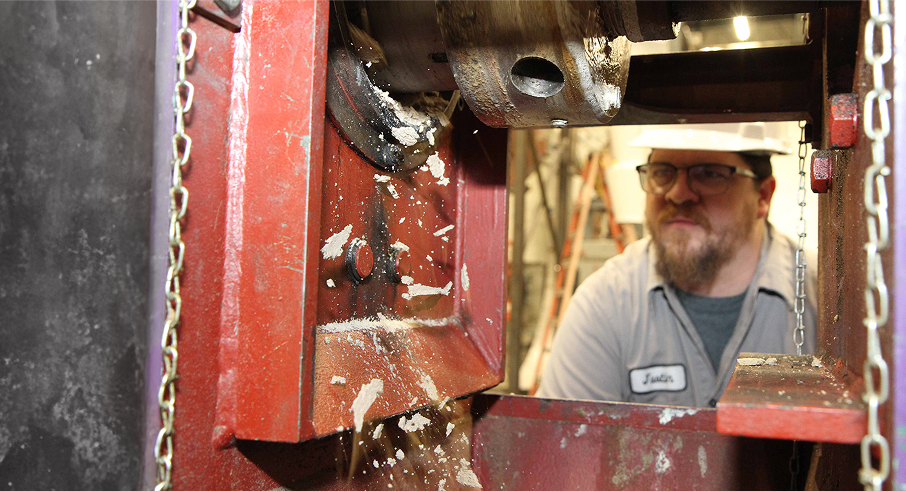
Take Your Next Steps in Canola Oil Processing with CPM
Whether you’re looking to optimize your current processing line, design a new facility from the ground up, or explore the latest innovations in oil extraction, our experts are ready to collaborate with you at every stage.
With 145+ years of industry leadership, global support, and cutting-edge technology, we bring more than solutions: We bring strategy, efficiency, and innovation tailored to your operation.
The world’s top processors already trust CPM. Shouldn’t you?
- Need expert guidance? Let’s start with a consultation.
- Looking for immediate improvements? We’ll assess your process efficiency.
- Exploring new plant designs? Our engineers will help you plan the future.
No matter where you are in your canola processing journey, CPM is ready to be your trusted partner. Let’s work together to maximize your yield, improve efficiency, and build a more sustainable operation.
